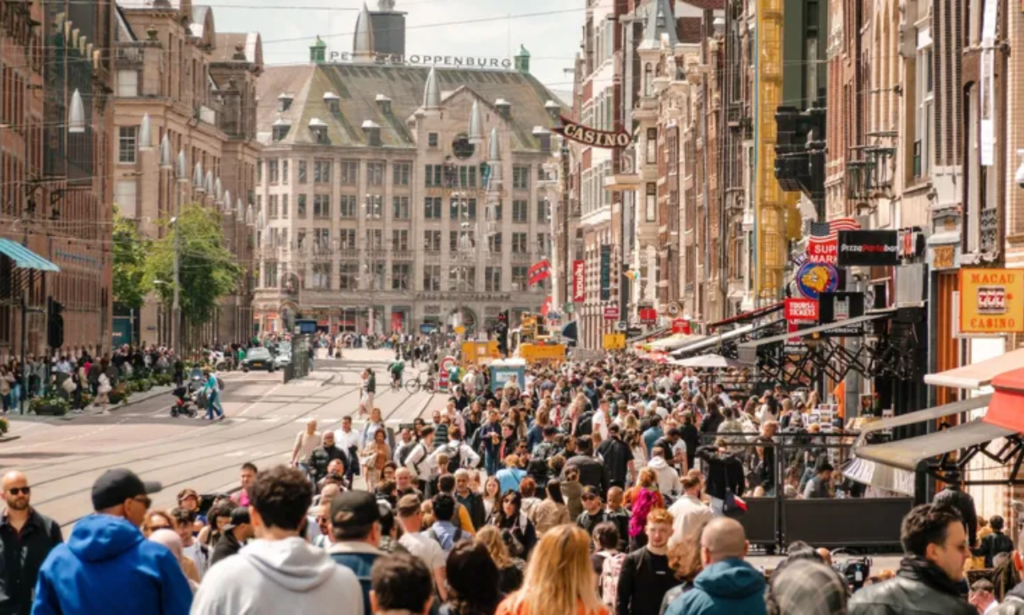Overtourism has become a buzzword in recent years, and for good reason. As more people have the means and desire to travel, popular destinations are feeling the strain of excessive tourism. This blog post explores the latest overtourism news, the consequences of this phenomenon, and potential solutions to address the challenges it poses.
What is Overtourism?
Overtourism occurs when there are too many visitors to a particular destination, leading to various negative impacts on the environment, local communities, and the overall tourist experience. This can result in overcrowded streets, degraded natural habitats, increased pollution, and a diminished quality of life for residents. The rise of social media and affordable travel options has exacerbated this issue, making once-remote locations accessible to millions.
Recent Overtourism News Highlights
Venice: A City Under Siege

Venice is one of the most famous examples of overtourism. The city’s unique charm and picturesque canals attract millions of visitors annually. However, this has led to significant problems. In recent overtourism news, Venice has introduced a daily visitor fee to manage the influx of tourists. Starting in 2024, day-trippers will have to pay a fee ranging from €3 to €10, depending on the season. This measure aims to control the number of visitors and ensure that those who do come contribute to the city’s maintenance.
Machu Picchu: Preservation Efforts Intensify
Machu Picchu, the iconic Incan citadel in Peru, has also been struggling with overtourism. The site receives over a million visitors each year, far exceeding the recommended limit. In response, Peruvian authorities have implemented stricter regulations, including limited entry times and mandatory guided tours. Recent overtourism news highlights the introduction of a timed ticketing system to spread out visitors throughout the day, reducing the pressure on the site.
Barcelona: Balancing Tourism and Local Life
Barcelona is another city grappling with the effects of overtourism. The influx of tourists has led to rising housing costs and a strained infrastructure. In recent overtourism news, the city council has introduced measures to cap the number of hotel beds and regulate short-term rentals like Airbnb. These steps aim to balance tourism with the needs of local residents, preserving the city’s unique culture and quality of life.
The Impact of Overtourism
The consequences of overtourism are far-reaching, affecting both the environment and local communities. Here are some of the most significant impacts:
Environmental Degradation
Popular tourist destinations often suffer from environmental degradation due to the sheer number of visitors. Natural habitats are trampled, wildlife is disturbed, and pollution increases. For example, the Great Barrier Reef has experienced significant coral bleaching, partly attributed to the large number of tourists diving and snorkeling in the area.
Strain on Infrastructure
Overtourism places immense pressure on local infrastructure, including transportation, waste management, and public services. Cities like Amsterdam and Prague have seen their public transportation systems overwhelmed during peak tourist seasons, leading to frustration for both visitors and residents.
Economic Disparities
While tourism can bring economic benefits, overtourism often leads to disparities. Local businesses may thrive, but the cost of living can increase for residents, making it difficult for them to afford housing and basic necessities. Additionally, seasonal tourism jobs are often low-paying and insecure.
Cultural Erosion
The influx of tourists can erode local cultures and traditions. In some cases, destinations may become “Disneyfied,” catering more to tourists’ expectations than preserving authentic cultural experiences. This can lead to a loss of identity and heritage for local communities.
Addressing Overtourism: Solutions and Strategies

To mitigate the effects of overtourism, various strategies can be implemented by governments, businesses, and travelers themselves. Here are some of the most promising solutions:
Implementing Tourist Caps
One effective measure to combat overtourism is to limit the number of visitors to a destination. This can be achieved through caps on daily or annual tourist numbers. For instance, Bhutan has long restricted the number of tourists by imposing a daily fee, which helps manage visitor numbers while generating revenue for conservation and infrastructure.
Promoting Off-Peak Travel
Encouraging tourists to visit during off-peak seasons can help distribute the flow of visitors more evenly throughout the year. This reduces pressure on popular destinations and allows for a more sustainable tourism model. Marketing campaigns and incentives can be used to promote off-peak travel.
Enhancing Sustainable Tourism Practices
Promoting sustainable tourism practices is crucial in addressing overtourism. This includes encouraging eco-friendly accommodations, supporting local businesses, and educating tourists about responsible travel behaviors. Many destinations are now focusing on sustainable tourism certifications and green initiatives to attract environmentally conscious travelers.
Diversifying Tourist Attractions
Encouraging tourists to explore lesser-known attractions can help alleviate pressure on popular destinations. By promoting alternative sites and experiences, tourism authorities can spread the economic benefits of tourism more evenly and reduce the environmental impact on overburdened areas.
Investing in Infrastructure
Improving infrastructure is essential to handle the demands of increased tourism. This includes expanding public transportation, enhancing waste management systems, and ensuring that local services can accommodate both residents and visitors. Investment in infrastructure can make tourism more sustainable and improve the quality of life for local communities.
Engaging Local Communities
Involving local communities in tourism planning and decision-making is crucial for sustainable tourism development. Residents should have a say in how tourism impacts their lives and be able to benefit from tourism-related opportunities. Community-based tourism initiatives can empower locals and ensure that tourism development aligns with their needs and values.
The Role of Travelers
Travelers also play a significant role in addressing overtourism. By making conscious choices, tourists can contribute to more sustainable travel practices. Here are some tips for responsible travelers:
- Research and Respect: Before visiting a destination, research its customs, traditions, and environmental challenges. Respect local cultures and minimize your impact.
- Choose Sustainable Options: Opt for eco-friendly accommodations, tour operators, and transportation methods. Support local businesses and avoid contributing to overcrowding at popular sites.
- Travel Off-Peak: Consider traveling during off-peak seasons to reduce the strain on popular destinations. This can also lead to a more enjoyable and authentic experience.
- Spread Out: Explore lesser-known attractions and regions to help distribute the economic benefits of tourism and reduce the impact on overcrowded areas.
- Minimize Waste: Reduce your environmental footprint by minimizing waste, using reusable items, and participating in local conservation efforts.
Conclusion
Overtourism is a complex issue that requires a multi-faceted approach to address. By staying informed through the latest overtourism news, understanding the impacts, and supporting sustainable practices, we can help ensure that tourism remains a positive force for both travelers and destinations. Whether through policy changes, community engagement, or individual actions, everyone has a role to play in mitigating the effects of overtourism and promoting a more sustainable future for travel.



